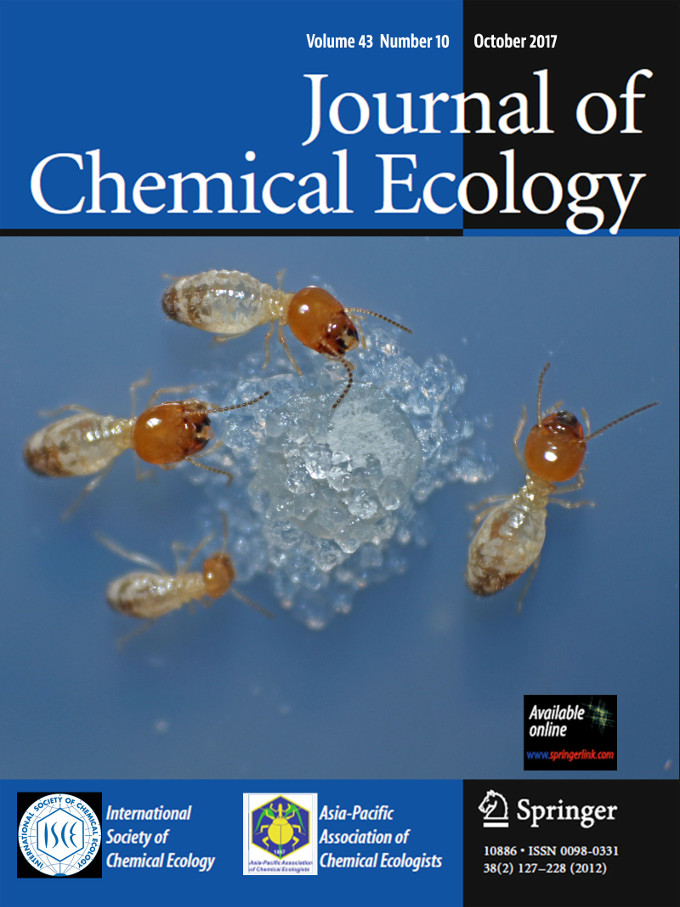Fungus-Farming Termites Selectively Bury Weedy Fungi that Smell Different from Crop Fungi by Lakshya Katariya et al., Renee Borges Lab
Thu, 2017-11-23 10:41
Worker castes of fungus-growing termite depositing “agar boluses” on the fungal plug of weedy
Pseudoxylaria (from the October issue of Journal of Chemical Ecology). Photo Credit: Nikhil More
Lakshya Katariya and colleagues (Renee M Borges’ lab) discover that fungus-farming termites
selectively bury the weedy fungi that smell different from crop fungi
Mutualistic associations such as the fungal farms of insects are prone to parasitism and are
consequently vulnerable to attack by weeds and pests. Therefore, efficient farm management
requires quick detection of weeds for their elimination. Furthermore, if the available weedicides are
non-specific, then the ability of insects to discriminate between crop and weeds becomes essential
for targeted application of such compounds.
In this new study, Lakshya Katariya and his colleagues from Prof. Renee M Borges’s lab demonstrate
for the first time in fungus-farming insects, that worker castes of the termite Odontotermes obesus
discriminate between their crop (Termitomyces) and the weedy (Pseudoxylaria) fungi, even if exposed
to only fungal scents.
The team found that these farmer termites respond to the presence of fungal mycelium or scent alone,
by burying the weed with the offered material such as soil or agar. They also believe that the termites
possibly anoint the weed with chemicals in the process.
Their experiments revealed that the scent profiles of crop and weedy fungi are distinct and the
differences are likely exploited by termites to selectively mount their defences. Sesquiterpene
compounds such as aristolene and viridiflorol, which are absent from crop odours, probably contribute
to the “weedy scent”.
The results of this study provide a general mechanism of how other fungus-farming insects could avoid
indiscriminate application of non-specific fungicides which could lead to poisoning their crops. These
results also have bearing on the stability of the mutualism between termites and their crop fungus in
the face of parasitism by weedy fungi.
This work was published in Journal of Chemical Ecology.
Citation: Katariya, L., Ramesh, P.B., Gopalappa, T., Desireddy, S., Bessière, J.-M., Borges, R.M., 2017.
Fungus-farming termites selectively bury weedy fungi that smell different from crop fungi. J. Chem.
Ecol. 43, 986–995.
Link: https://link.springer.com/article/10.1007/s10886-017-0902-4

Add new comment